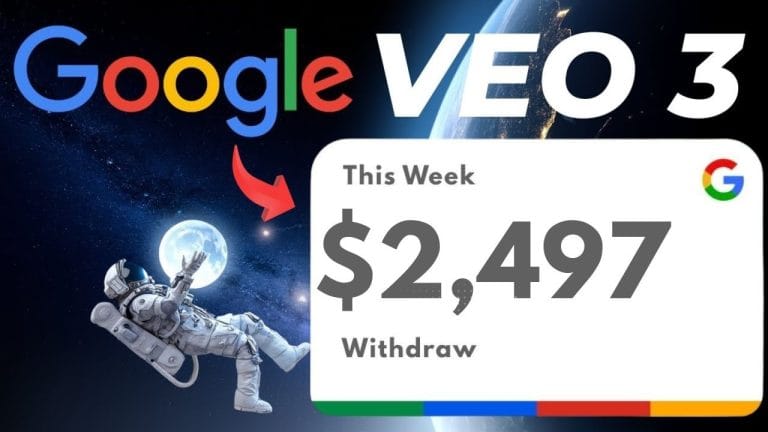 Economic Inequality
Economic InequalityWhy Economic Inequality Grows: Coins, Curiosity, and the Truth About Real Money
https://youtu.be/wqvnWbKjT4w
When a simple silver coin changed hands in 1964, nobody in Hawaii—not even a high school kid desperate for caddy cash—guessed it would be a clue to today’s widening wealth gap. Most people take money at face value, but sometimes a little curiosity (and a bit of parental disappointment) sparks a revelation. This is a story about coins, confusion, curiosity, and why the gap between rich and poor keeps stretching further—one cent at a time.
1. The Coin Toss: Gresham’s Law and the Secret Life of Money
The story of economic inequality often begins in the most unexpected places—sometimes with something as simple as a coin. In 1964, a curious seventeen-year-old in Hawaii stumbled upon a discovery that would illuminate how the wealth gap starts not in boardrooms or policy meetings, but in our everyday understanding of what constitutes real money versus fake money.
A Teenager’s Accidental Discovery
Picture this: a high school dropout working as a golf course caddy, carrying two or sometimes three bags just to make ends meet. This young man noticed something peculiar when his friend Jim Clark handed him a Kennedy half dollar from 1964. What caught his attention wasn’t the coin’s design, but its composition. The 1964 coin was silver, while the 1965 version had switched to copper.
“I’m looking at this damn thing going why is it copper,” he recalled years later. This moment of curiosity would prove more valuable than any economics textbook. Research shows that economic inequality often stems from basic misunderstandings about value that begin early in life—and this teenager was about to learn that lesson firsthand.
Gresham’s Law: The Secret Rule of Money
What this young caddy had discovered was Gresham’s Law in action—an economic principle stating that “bad money drives out good money” when both circulate simultaneously. When the American government switched from silver to copper coins in 1964, they were essentially introducing “bad money” (copper) to replace “good money” (silver).
For thousands of years, governments have attempted this same monetary sleight of hand. The teenager didn’t know the fancy economic term, but he understood the principle intuitively. He began systematically collecting silver coins, trading his crumpled dollar bills for rolls of quarters, dimes, and half dollars at the bank, then sorting out the silver ones and returning the copper coins.
The Real Money vs Fake Money Distinction
This simple sorting process revealed a fundamental truth about how real money vs fake money operates in practice. The silver coins, though carrying the same face value as their copper counterparts, possessed intrinsic worth far beyond their stamped denomination. Today, those pure silver coins are worth approximately $35 per ounce—significantly more than their face value.
When the young man would later hold up a silver coin and a ten-dollar bill in presentations, asking audiences which they’d choose, most people consistently grabbed the paper money. They were unknowingly violating Gresham’s Law, choosing the “bad money” over the “good money” because they couldn’t distinguish between genuine value and artificial value.
When Family Becomes the Teacher of Financial Illiteracy
The most heartbreaking lesson came during Christmas vacation from the Merchant Marine Academy. The young man returned home to find his carefully accumulated bag of silver coins missing. The thief wasn’t a stranger—it was his mother.
“Mom, where’s my bag of silver coins?” he asked. Her response: “Oh, all that trashy stuff? I spent it.”
This moment crystallized a harsh reality about how the wealth gap perpetuates itself across generations. As he would later reflect, “The reason poor people are poor like my mom and dad… they don’t know real money from fake money.” His mother had literally spent a fortune, mistaking genuine wealth for worthless clutter.
The Foundation of Financial Understanding
This family incident illustrates how economic inequality often roots itself in daily decisions about assets rather than grand policy failures. The wealth gap doesn’t just exist because of systemic issues—it grows because fundamental misunderstandings about value get passed down through families.
The teenager’s mother wasn’t malicious or stupid. She simply lacked the knowledge to distinguish between authentic wealth and its artificial substitutes. This knowledge gap represents one of the most overlooked factors in understanding why economic inequality persists and expands over time.
What started as teenage curiosity about different coin compositions had revealed something profound: the secret life of money lies not in complex financial instruments, but in the basic ability to recognize real value when you see it. This distinction forms the foundation upon which all other financial understanding builds—or crumbles.
Playing the Wrong Game: Why Working Hard Doesn’t Beat Economic Inequality
Most families across America work incredibly hard, yet they’re unknowingly playing a losing game. They chase paychecks made of what experts call “fake money” without realizing the rules changed decades ago. This fundamental misunderstanding drives the growing wealth gap that’s tearing communities apart.
The Silver Coin Lesson That Schools Never Teach
Consider this real example: A curious child once collected silver coins when they cost just 10 cents per ounce. By November 2024, those same coins were worth $35 per ounce—a 350x increase. But here’s the critical question: Did the silver become more valuable, or did the dollar lose its purchasing power?
The answer reveals why income inequality keeps growing despite rising household incomes. Research shows that income gaps have expanded for over 30 years, even as people work harder and earn more nominal dollars. The problem isn’t effort—it’s education about real money versus fake money.
The Trillion-Dollar Reality Check
America prints approximately $1 trillion in new money every 90 days as of 2024. To put this staggering figure in perspective: spending $1 per second, it would take 31,618 years to exhaust just one trillion dollars. This relentless money printing directly impacts working families who don’t understand Gresham’s Law—the economic principle that bad money drives out good money.
When someone celebrates getting a $100,000 annual salary, they’re often celebrating fake progress. That $100,000 today carries less purchasing power than smaller amounts did years ago. Meanwhile, asset accumulation strategies protect and grow wealth automatically.
Asset Building vs. Paycheck Chasing
The wealthy understand a crucial distinction that schools fail to teach: the difference between working for money and making money work for them. While most people trade hours for dollars, successful wealth builders acquire assets—silver, gold mines, Bitcoin, real estate—that appreciate faster than currency devalues.
“The rich don’t work for fake money. Rich work to acquire assets.”
This explains why wealth disparities continue expanding. In cities like Minneapolis, the richest 0.1% have nearly tripled their wealth share since 1960. High-tech sectors create massive wealth for asset holders, while traditional manufacturing job losses decrease community wealth for wage earners.
The Educational System’s Missing Curriculum
Traditional education focuses on preparing students for employment rather than wealth creation. Students learn spelling tests instead of asset recognition. They memorize historical dates but never discover why silver jumped from 10 cents to $35 per ounce.
Imagine if schools assigned “asset scavenger hunts” instead of typical homework. Students might learn to identify undervalued assets, understand inflation’s impact on savings accounts, or recognize the difference between appreciating investments and depreciating currency. Such education could dramatically reduce future poverty rates and help break generational cycles of financial struggle.
The Dangerous Desperation Cycle
Communities of color and undocumented workers face additional challenges in this rigged system. Studies indicate racial discrimination contributes to persistent earnings gaps, with median white workers significantly out-earning Black and Latino workers. Agricultural workers average just $37,370 annually while living costs soar.
When people don’t understand real money principles, they become desperate. They live on credit cards, take predatory loans, and make financial decisions that worsen their situations. This desperation becomes dangerous for entire communities as the wealth gap widens.
The solution isn’t working harder within the broken system—it’s learning the rules that wealthy people already know. Understanding the difference between earning currency and accumulating assets represents the first step toward escaping the poverty trap that captures even well-meaning, hardworking families.
The game changed, but most players never got the new rulebook. Those who understand asset accumulation continue building wealth while others exhaust themselves chasing increasingly worthless paychecks.
3. Assets or Illusions? Decoding Wealth Concentration and the Bitter Truth About the Gap
The numbers tell a stark story about wealth concentration in America. Research shows that in cities like Minneapolis, the share of wealth held by the richest 0.1% has nearly tripled since 1960. This isn’t just a statistic—it’s a reflection of a fundamental divide between those who understand real assets and those who don’t.
As one financial educator puts it bluntly:
“The gap between rich and poor is getting wider because poor people don’t know what real money is.”
This harsh assessment (5:35-5:37) points to a critical distinction that drives wealth disparities across communities and generations.
Real Assets vs. Fake Assets: The Great Divide
The wealthy understand something crucial about money creation. When governments print more currency, asset prices typically rise. Those who own real assets—silver, gold, Bitcoin, real estate, or even businesses—see their wealth increase (5:48-6:01). Meanwhile, those holding what some consider “fake assets” often watch their purchasing power erode.
Consider the progression from casual collector to serious investor. Someone might start with silver coins, then graduate to owning tons of precious metals, then mining operations, then diversified real estate portfolios. Each step represents a leap in understanding how wealth concentration actually works.
The contrast is striking. While median household income hovers between $75,000 to $80,000, the wealth gaps between different locations have grown dramatically. High-tech centers like San Francisco and New York have experienced massive wealth increases, while post-manufacturing communities lag behind.
Geographic and Racial Disparities in Wealth Building
Wealth disparities aren’t just about individual choices—they’re shaped by systemic factors. Communities of color are more likely to live in persistently poor areas, with median white workers earning significantly more than Black and Latino workers. These disparities compound over generations, creating persistent wealth gaps that traditional employment alone cannot bridge.
Manufacturing job losses have particularly impacted certain regions, while cities leading in high-tech sectors have seen dramatic wealth growth. This geographic concentration of wealth reflects broader economic shifts that leave entire communities behind.
The Psychology of Asset Accumulation
There’s something profound about the mindset shift from counting dollars to counting tons. When someone asks, “How many tons do you own?” instead of discussing small stacks of coins (7:15-7:20), it reveals a completely different approach to wealth building.
This isn’t about intelligence or education—it’s about focus and understanding. The speaker admits to academic struggles but emphasizes a simple strategy: “I just invest in what I like, period” (7:02-7:05). This approach cuts through market noise and guru advice to focus on accumulating tangible assets.
The Theoretical Limit Question
An interesting thought experiment emerges: what would happen if everyone suddenly understood and pursued real assets? Would the system reach a breaking point? The current wealth concentration suggests we’re nowhere near that scenario. Most people remain focused on traditional employment income rather than asset accumulation.
The advice remains consistent: find assets you understand and love, then accumulate them systematically. Whether it’s precious metals, cryptocurrency, real estate, or businesses, the key is moving beyond fake money toward real wealth (6:08-6:15).
Breaking Through the Noise
The investment landscape is cluttered with conflicting advice, YouTube gurus, and market predictions. But wealth concentration happens when people ignore the noise and focus on accumulation. The question isn’t whether silver or gold or Bitcoin will perform well tomorrow—it’s whether you’re building real assets over time.
This perspective cuts through complexity to reveal a simple truth: wealth inequality persists because most people work for currency while others accumulate assets. The gap widens not because of work ethic differences, but because of fundamental misunderstandings about money itself.
Understanding this distinction—between real assets and fake money—may be the most important financial education anyone can receive. It explains why traditional advice about working harder often fails to close wealth gaps, and why asset ownership remains the primary driver of long-term financial success.
TL;DR: Schools should have taught us to tell the difference between real and fake money: the wealth gap keeps widening because most people (still) can’t. Collect coins, buy assets, ignore the naysayers, and remember—economic inequality isn’t just numbers, it’s choices.
A big shoutout to https://www.youtube.com/@TheRichDadChannel for the enlightening content. Be sure to check it out here: https://youtu.be/wqvnWbKjT4w.












